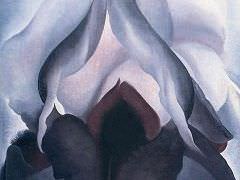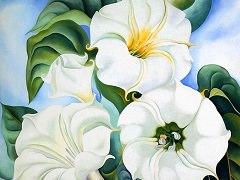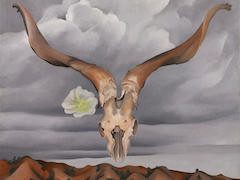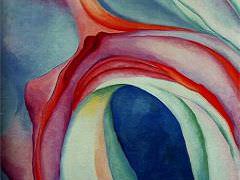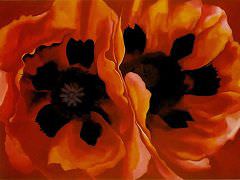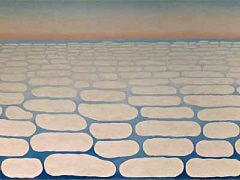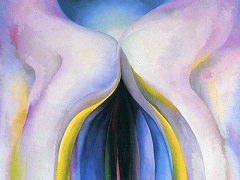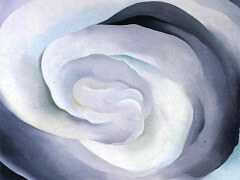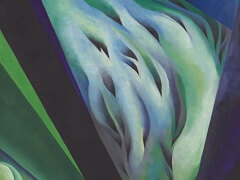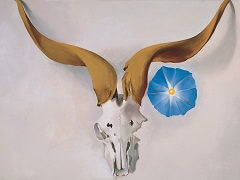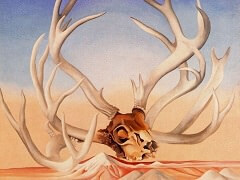Yellow Calla, 1926 by Georgia O'Keeffe

During the second half of the nineteenth century, the exotic South African calla lily was introduced in the United States, and it began to appear as a subject in American art. The flower became even more popular with artists after Sigmund Freud provided a sexual interpretation of its form that added new levels of meaning to depictions of it. The calla lily soon became a recurring motif in works by important painters and photographers, particularly Georgia O'Keeffe, who depicted the flower so many times and in such provocative ways, that by the early 1930s she became known as 'the lady of the lilies.'
According to O'Keeffe:
Everyone has many associations with a flower. You put out your hand to touch it, or lean forward to smell it, or maybe touch it with your lips almost without thinking, or give it to someone to please them. But one rarely takes the time to really see a flower. I have painted what each flower is to me and I have painted it big enough so that others would see what I would see. ”
O'Keeffe's flowers were soon synonymous with her identity as an artist. Elizabeth Arden commissioned a floral mural for the wall of her New York salon and O'Keeffe painted a trio of white jimson weeds, flowers she had discovered after 1929 when she started spending the summers in New Mexico. They grew wild on the patio of her small adobe home at Ghost Ranch.

